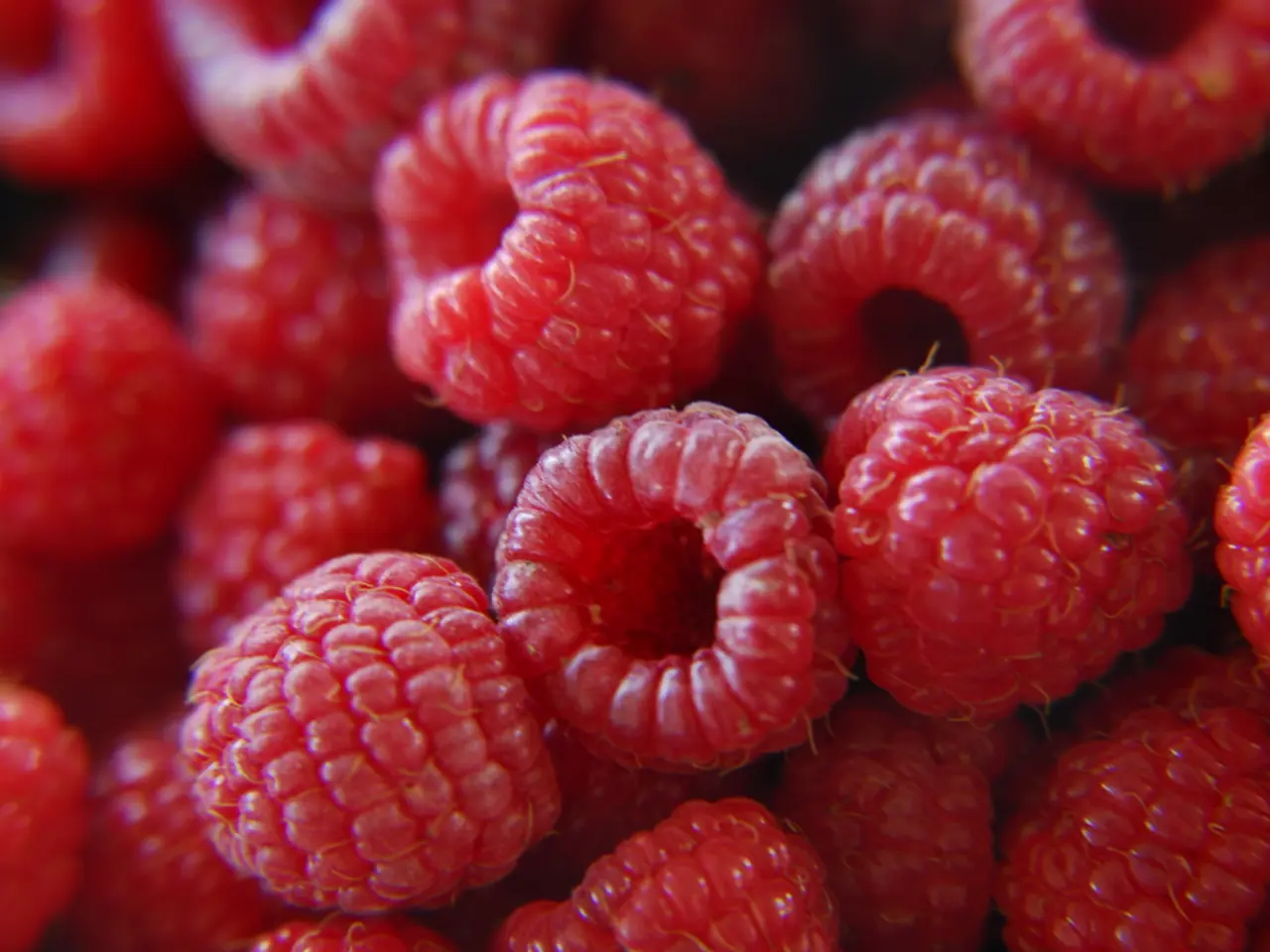Winterizing Raspberry Plants: Necessary Cold-Climate Care Guidelines
In the heart of autumn, as the raspberry harvest comes to an end, it's time to start thinking about winterizing your plants. Proper care during this season can significantly impact their health and productivity in the coming year. Here's a step-by-step guide to help you protect your raspberry plants from pests, diseases, and cold damage.
**1. Pruning**
Start by pruning your raspberry plants in late fall. Remove any dead, diseased, or damaged canes to prevent the spread of disease and reduce pests' hiding places. Cut back summer-bearing canes to the ground, and prune fall-bearing canes (ever-bearing) to about 2-3 inches from the ground.
**2. Mulching**
Apply a thick layer of organic mulch around the base of the plants. This helps insulate the roots from cold temperatures and retain soil moisture. Use materials like straw, wood chips, or compost to create a mulch layer about 3-4 inches deep.
**3. Protection from Cold**
In areas with severe cold snaps, consider covering the plants with a breathable fabric to protect them from extreme cold and frost. Ensure good air circulation around the plants to prevent moisture buildup, which can lead to disease.
**4. Pest Control**
Remove any weeds around the raspberry plants, as these can harbor pests over winter. Use natural pest control methods like neem oil or insecticidal soap to protect against pests that might be active during warmer winter days.
**5. Disease Prevention**
Apply a fungicide if necessary to prevent diseases like powdery mildew or rust from affecting the plants in early spring. Ensure good sanitation practices by removing any infected plant material.
**6. Soil Care**
Maintain good soil health by adding organic matter like compost to improve soil structure and fertility.
By following these steps, you can help protect your raspberry plants from pests, diseases, and cold damage, ensuring a healthy and productive harvest in the spring.
Remember, removing dead or weak canes reduces the risk of disease in raspberry plants. To protect raspberry plants from pests and diseases, pruning should be done before the onset of winter, and netting can be used to safeguard against birds and animals.
Mulching should not be done too early to avoid attracting rodents seeking warmth. Proper winter care for raspberry plants involves pruning and protecting the canes. Raspberry plants need adequate water, and consistency is key, requiring 1-2 inches of water per week.
To protect the crowns and lower parts of the canes from harsh winter weather, burlap or mesh wire cages filled with straw can be used.
Glen, a gardening expert with over 15 years of experience in garden maintenance, design, and landscaping services, recommends these practices for a successful winterizing of your raspberry plants. Happy gardening!
Prepare your home-and-garden for the winter by following Glen's expert guidelines on winterizing raspberry plants. This includes pruning in late fall to remove dead and diseased canes, mulching the base of the plants with organic materials, protecting the plants from cold with breathable fabrics, controlling pests with natural methods, preventing diseases with fungicides and maintaining good soil health. Practicing proper care during winter can significantly impact the health and productivity of the raspberry plants in the coming lifestyle season.




